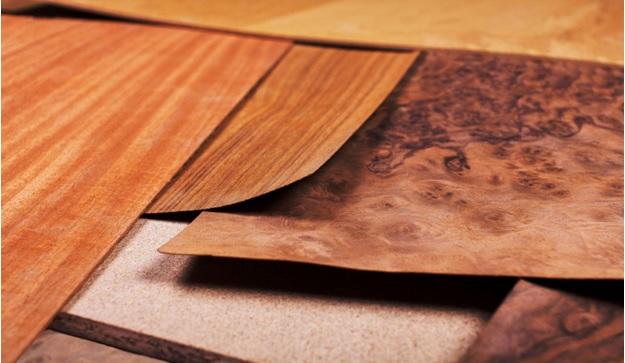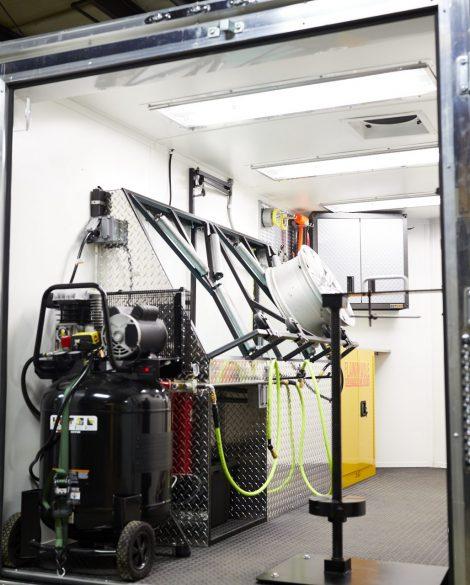Troubleshooting Contact Cement: Issues, Mistakes, and Solutions
So you’ve just gotten a few sheets of hickory veneer and you’re planning on applying them to a nice, flat, level surface, such as a tabletop or the side of a cabinet.
You’re planning on using contact cement as an adhesive. So far so good.
But don’t get ahead of yourself. Before you break out the veneer, cement, and tools and get ready to apply, brush up on some know-how, generously furnished by Oakwood Veneer.
Edge Lifting
A common problem associated with the application of veneer using contact cement is edge lifting, which manifests when a corner or edge peels away and raises up from the substrate.
Edge lifting has a few different possible causes. One of the most obvious is the use of insufficient adhesive. Ensure that both the veneer and substrate are evenly covered with contact cement to redress this issue.
Insufficient compression of the veneer and substrate can also cause edge lifting. Increase nip pressure (pressure between the rollers) to help fix edge lifting in this situation.
Bubbles
Another common problem that occurs when applying wood veneer with contact cement is the formation of bubbles under the veneer.
The use of an ineffective glue may be the culprit here, but this issue can also be caused by irregular compression or adhesive coverage. Before applying, ensure even contact cement coverage, then apply pressure from the center outwards to force out any trapped air.
The adhesive application method may also be to blame. Spraying is the best option, followed by rolling, then brushing. Spray if possible and ensure even coverage before proceeding.
If bubbles pop up a while after applying the veneer, you may also be able to slit the veneer (along the grain) with a razor, and use a syringe or toothpick to apply a little adhesive under the affected area before pressing it flat again.
Adhesive Failure
Adhesive failure can also be a concern when applying wood veneer with contact cement.
The problem could be the substrate itself. For one thing, veneer should not be applied over laminate. Also, some substrates respond better to contact cement and veneer than others. MDF (medium-density fiberboard) is better than industrial particle board, and industrial particle board is better than plywood.
If the adhesive surface is contaminated, that can also cause issues with proper bondage. Keep your work area clean to help prevent this potential issue.
Adhesive failure can also be caused by ineffective application techniques and insufficient pressure. Increasing the pressure while rolling may be able to help with this.
Also, heating the surface can help improve adhesive bondage – try using an iron set between 200℉ and 225℉, as this may improve adhesion.
Weak or No Contact Bond
If there is a weak contact bond (or the contact cement just isn’t working) it could be because it is too old. Most contact cement, sealed, lasts for about a year (less if it has been opened). Consult the packaging to see if the cement you’re using is too old.
Trapped solvent and moisture intrusion can also cause problems with adhesion contact bond and drying time. If spraying, check the spraying equipment for trapped moisture. Do not use a sprayer if there is residual moisture; let it dry fully first.
High humidity can also cause complications associated with drying time, so you might need to be a little more patient if it is very humid. Increasing the drying time may just do the trick.
Adhesive Releases from Backer or Substrate
One more common problem associated with the use of contact cement and wood veneer is adhesive release, either from the backer or substrate.
There are two common causes. One is that the contact surfaces are not completely dry, and the other is that the substrate surface is contaminated.
If the problem is moisture, simply increase drying time. The fix, though, is to keep a dry workspace and only apply contact cement to dry veneer or substrate.
The other problem requires you to keep a clean workspace. Always clean the substrate thoroughly before applying contact cement as dust and other particulate contamination will adversely affect adhesive bondage.
Before You Apply that Hickory Veneer: Visit Oakwood Veneer

This is not a complete list of potential mishaps, issues, and mistakes that can occur when applying wood veneer with contact cement.
For a more comprehensive list, please visit Oakwood Veneer or see their page on contact cement issues.
Oakwood Veneer is also a trusted supplier of wood veneer sheets and panels, with a huge assortment of domestic and exotic species in stock.
If you’re only at the stage where you’re reading up on veneer and application techniques and haven’t actually purchased your veneer yet, visit their website.
They carry a wide range of beautiful hardwood veneers, including but not limited to oak, beech, teak, mahogany, zebrawood, and hickory veneer, which can be stained and finished as you desire to create a wide variety in aesthetic appeal.
For more information about Alder Veneer and Wood Veneer Sheets 4×8 Please visit: Oakwood Veneer Company



